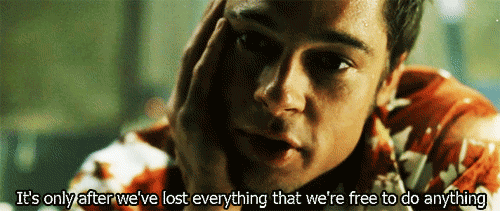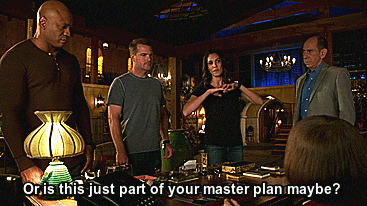It’s every CAT aspirant’s recurrent nightmare. To wait for what seems like an agonizingly long period after the exam only to be rudely informed that you are not in. Of course, the world does not fall on your head once the results are declared but for a good many that don’t make it, life is not any easier. For one, it’s not the same again. So how does one cope with the post-CAT syndrome, if one may call it so? Here’s a list of do’s and don’ts that the ‘lucky-next-time’ ones could go through should they feel apocalyptic about the world and themselves. While the list is not compulsory, the student is advised to bear in mind that it is only indicative and that depending on one’s taste, inclination and temperament one may change or add to it.
Accept the Verdict:
 Acceptance is a magical word. Our capacity to transform ourselves is often subject to our realizing and accepting our limitations. In fact, the road to perfection is always littered with a good many hits and misses. Of course, there is a self-deprecating aspect to every defeat but it is only temporary. Faced with failure, a good many hearts have sunk and a good many dreams reduce to dust. But those possessing a firm belief in themselves and their goals have met failure with fortitude. True, we may have performed to the best of our abilities. But our rejection shows that our best may yet be bettered. So after we have shed some of our precious tears it’s time to look up and see the road ahead, not with bleary eyes but with a clear vision and new vigour. So once the cursing and cribbing is over, we must look at the reality staring us in the face. It isn’t always comfortable to wish reality away the way an ostrich does.
Acceptance is a magical word. Our capacity to transform ourselves is often subject to our realizing and accepting our limitations. In fact, the road to perfection is always littered with a good many hits and misses. Of course, there is a self-deprecating aspect to every defeat but it is only temporary. Faced with failure, a good many hearts have sunk and a good many dreams reduce to dust. But those possessing a firm belief in themselves and their goals have met failure with fortitude. True, we may have performed to the best of our abilities. But our rejection shows that our best may yet be bettered. So after we have shed some of our precious tears it’s time to look up and see the road ahead, not with bleary eyes but with a clear vision and new vigour. So once the cursing and cribbing is over, we must look at the reality staring us in the face. It isn’t always comfortable to wish reality away the way an ostrich does.
Be Positive:
 There is this curious tale about two prisoners who were put in a cell in the middle of a desert. When each was asked to describe what he saw, one said he saw the hopeless sand around him while the other replied that he could see the stars at night through the bars of the cage. What a wonderful thing perspective is. An alcoholic was shown the risks involved in drinking with the help of a demonstration. As part of the experiment, a doctor took a glass containing a good many germs and emptied it into a beaker filled with alcohol. The germs disintegrated instantaneously. “Now you see”, said the beaming doctor, “what happens to your stomach when you flush it with alcohol.” “Yes, sir” observed the drunkard wryly, “all the germs in my stomach are burnt alive!” While this may be an extreme example of a never-say-die attitude, it shows what lengths people can go to just to cling onto their beliefs. It’s always nice to have a positive attitude, but one may not be fortunate to have it always. A good number of students who manage to clear the CAT exam in their 3rd or 4th attempt are likely to have oodles of confidence and a damn good dose of perseverance. All of you who didn’t get a call should take inspiration from these. It does take a lot of guts to hang in out there for so long. Most often what the person who quits doesn’t realize is that success awaited him at the next junction.
There is this curious tale about two prisoners who were put in a cell in the middle of a desert. When each was asked to describe what he saw, one said he saw the hopeless sand around him while the other replied that he could see the stars at night through the bars of the cage. What a wonderful thing perspective is. An alcoholic was shown the risks involved in drinking with the help of a demonstration. As part of the experiment, a doctor took a glass containing a good many germs and emptied it into a beaker filled with alcohol. The germs disintegrated instantaneously. “Now you see”, said the beaming doctor, “what happens to your stomach when you flush it with alcohol.” “Yes, sir” observed the drunkard wryly, “all the germs in my stomach are burnt alive!” While this may be an extreme example of a never-say-die attitude, it shows what lengths people can go to just to cling onto their beliefs. It’s always nice to have a positive attitude, but one may not be fortunate to have it always. A good number of students who manage to clear the CAT exam in their 3rd or 4th attempt are likely to have oodles of confidence and a damn good dose of perseverance. All of you who didn’t get a call should take inspiration from these. It does take a lot of guts to hang in out there for so long. Most often what the person who quits doesn’t realize is that success awaited him at the next junction.
Rationalise:
 Our brain is a wonderful tool as far as our ability to rationalize is concerned. Put in other words, it comes to our rescue helping us accept things we don’t like to or want to. Some also term this as a kind of psychological defence mechanism, a way of consoling yourself, which at times, may not be the best thing to do. Now, unless you act like the fox that called the grapes it saw hanging from a vine ‘sour’ because it was unable to reach them, you cannot be accused of resorting to some ingenious way of fooling yourself. There are several ways of looking at any defeat and it’s our critical way of thinking that helps us to formulate these.
Our brain is a wonderful tool as far as our ability to rationalize is concerned. Put in other words, it comes to our rescue helping us accept things we don’t like to or want to. Some also term this as a kind of psychological defence mechanism, a way of consoling yourself, which at times, may not be the best thing to do. Now, unless you act like the fox that called the grapes it saw hanging from a vine ‘sour’ because it was unable to reach them, you cannot be accused of resorting to some ingenious way of fooling yourself. There are several ways of looking at any defeat and it’s our critical way of thinking that helps us to formulate these.
A good many students taking the CAT exam at any point of time have a host of reasons to explain their failure. As such, this is not to suggest that they are all fooling themselves into believing or uncritically accepting these reasons or excuses. The point is that these are also genuine ways of accounting for defeat and are definitely based on an analytical and critical reflection. If one were to draw up a list (oh no, not another list!) here, possibly the excuse – ‘I was not ready’, would be Numero Uno. Obviously, when one considers that a good many of the one lakh plus students who take the exam are likely to be attempting it either while pursuing a course of study – graduation or otherwise, or while doing a job – part-time or full-time, it makes sense to buy the ‘I was not prepared’ line of reasoning. Moreover, once a student is able to assess the damage caused by lack of preparation, he is already on the road to recovery. Now, while this form of rationalisation may help those who have been working or studying, what about the students who have been seemingly single-mindedly pursuing the CAT and who therefore, perhaps lack a plausible explanation to justify their poor attempt? Well, they’ll have to come up with a really good reason not just for themselves but also for those who wish to know why their performance was below par. Whatever may be the motive behind this cause finding exercise, one thing is plain enough. The soul-searching that the student goes through will definitely help him to look at his attempt in a proper perspective.
All is not lost:
 An old R. K. Laxman cartoon that appeared some years ago had this peculiar scene in which one beggar was shown comforting another who was distraught having lost all his footpath belongings in a municipal raid. The wise beggar told his inconsolable friend, “My dear don’t worry about the things that have gone. At least the corporationwallahs have spared this begging bowl of yours. Had they taken that away you would have to really beg for a living!” It’s sad but true that one can take hope from the remotest and most insignificant of things provided one wants to.
An old R. K. Laxman cartoon that appeared some years ago had this peculiar scene in which one beggar was shown comforting another who was distraught having lost all his footpath belongings in a municipal raid. The wise beggar told his inconsolable friend, “My dear don’t worry about the things that have gone. At least the corporationwallahs have spared this begging bowl of yours. Had they taken that away you would have to really beg for a living!” It’s sad but true that one can take hope from the remotest and most insignificant of things provided one wants to.
So what are these possibilities that lie before a student who has not been so lucky? Well, for one, he could look up the option of employment and take some work experience. After all, we cannot always be sitting empty-handed in the hope that one day the IIM’s or some top B-school will roll out the red carpet for us. And even otherwise, it is better to tell an interview panel (when a year later you are short-listed) that you were working and not just preparing for the exam. Of course, this prescription may not work in every case as each student has his own preparedness to consider. Also, if employment is going to take away most of your energy and time, then it is not worth the compromise. The moot point is that one should look at the opportunity lost as an opportunity gained. It is characteristic for a student taking the exam to make the remark: “I have gained in experience from this attempt of mine. Surely I can use it to better my chances the next time around.”
Since a highly competitive exam like the CAT is likely to exert its own kind of pressure, one cannot disregard the role that peer pressure plays in the competitive life of any aspirant. Now while a good number of students may have joined the race as a result of the bandwagon effect, it is interesting to see how they cope with their failure vis-à-vis the success of their immediate peers. It is possible, that the really disinterested students who may have joined the race for want of something better to do in life may fall by the wayside if they often meet with failure. But those who are sincerely committed may take hope from their friends and acquaintances, who have made it. A student who cleared the exam in his fourth attempt confessed on one occasion that what kept him going was a close friend of his had managed to make it to one of the IIMs. Since he was convinced that his calibre was the same as, if not higher than that of his friend, he was confident of getting in someday if he kept trying.
Re-plan:
 If Plan A has flopped, there must be a Plan B. You can’t use the same strategy and expect a different result. It is said that even the wise make mistakes but only a fool insists on repeating them. Failures are eye-openers provided you have the eye to spot your own faults. So if you were not prepared because of your work or your study, how are you going to brace yourself for CAT – Part 2? What are you going to change to make this the best and smartest possible effort? Will you be able to take time off from your work or your study and dedicate yourself completely to the mission? Will you be giving it your best shot the next time? Every student who takes the test must engage with questions of this kind and try and find genuine answers. Any failure calls for a good measure of introspection. We need to hunt deep within ourselves for those elements or factors that have marred our chances and identify them. Once these are discovered they have to be weeded out quickly.
If Plan A has flopped, there must be a Plan B. You can’t use the same strategy and expect a different result. It is said that even the wise make mistakes but only a fool insists on repeating them. Failures are eye-openers provided you have the eye to spot your own faults. So if you were not prepared because of your work or your study, how are you going to brace yourself for CAT – Part 2? What are you going to change to make this the best and smartest possible effort? Will you be able to take time off from your work or your study and dedicate yourself completely to the mission? Will you be giving it your best shot the next time? Every student who takes the test must engage with questions of this kind and try and find genuine answers. Any failure calls for a good measure of introspection. We need to hunt deep within ourselves for those elements or factors that have marred our chances and identify them. Once these are discovered they have to be weeded out quickly.
No plan is foolproof and one may have easily overlooked the chinks in one’s armour. That is why there is a good reason behind having strategies in reserve. At least there is something to bank on as you plan anew for your next attempt. Re-planning involves a lot of rethinking and rescheduling. You may have to think through newer ways of getting there and also changing the regimen or timetable that you were following. Obviously you can’t rely on the same methodology anymore assuming that luck played spoil sport.
Be brave:
 Extraordinary situations call for a more than ordinary response. As a flood of stories about brave tsunami survivors trickle in, the world will increasingly be reminded of that four letter word which refuses to desert the human spirit – will. Any CAT aspirant should try and understand the full import of this word. If a student has the desire to succeed, it isn’t enough. He must have the will to succeed. If the drive or to put it in other words, the determination or burning passion is missing, one cannot expect to scale new heights. Surely, there are many recipes for success and publishing houses regularly dish out more of these in one calendar year than the days of a year, thanks to the aura, which has come to surround success in the contemporary world. But even these cannot afford to undermine the role that an ingredient like will plays in any success story.
Extraordinary situations call for a more than ordinary response. As a flood of stories about brave tsunami survivors trickle in, the world will increasingly be reminded of that four letter word which refuses to desert the human spirit – will. Any CAT aspirant should try and understand the full import of this word. If a student has the desire to succeed, it isn’t enough. He must have the will to succeed. If the drive or to put it in other words, the determination or burning passion is missing, one cannot expect to scale new heights. Surely, there are many recipes for success and publishing houses regularly dish out more of these in one calendar year than the days of a year, thanks to the aura, which has come to surround success in the contemporary world. But even these cannot afford to undermine the role that an ingredient like will plays in any success story.
One can rest assured that there are several ways of reaching one’s dreams or goals and therefore there does not exist any clear-cut way to achieve them. We may take a leaf out of the books of those who have been there and done that but we may not follow their footprints. In fact, comparatively speaking rather than reading the books on successful men and women, one should look at the lives of unsuccessful people if only to avoid the mistakes they have committed. These also-rans of the world offer valuable lessons to the student who sits dejected and disappointed.
There is no better way of motivating oneself than self-motivation. One may take the camel to the well or the well to the camel but it’s ultimately the camel, who should drink the water. No matter how hard one tries to push or pull someone externally, the effort will be wasted if there is no spark from within. It is imperative for a demoralised student to quickly discover the resources within and take action, now that the CAT is out of the bag. And as he prepares for the long walk all over again, he must draw succour from the age-old cliché (some clichés never die, people do): “where there is a will there is a way”.
Just lift yourself up, clear the dust from your mind and gear up for the next lap of the unforgiving test.


Leave a Reply
You must be logged in to post a comment.